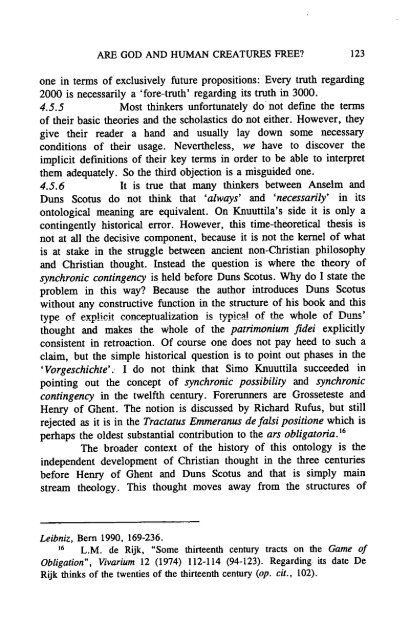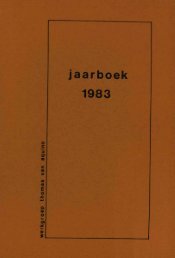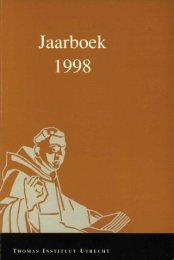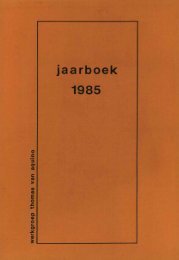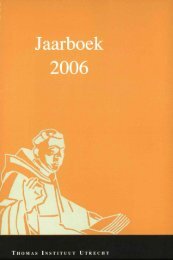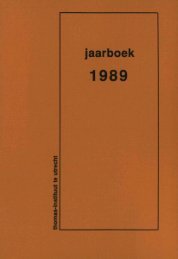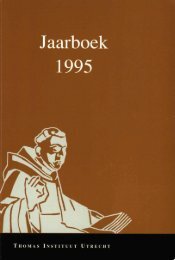Jaarboek Thomas Instituut 1997 - Thomas Instituut te Utrecht
Jaarboek Thomas Instituut 1997 - Thomas Instituut te Utrecht
Jaarboek Thomas Instituut 1997 - Thomas Instituut te Utrecht
Create successful ePaper yourself
Turn your PDF publications into a flip-book with our unique Google optimized e-Paper software.
ARE GOD AND HUMAN CREATURES FREE? 123<br />
one in <strong>te</strong>rms of exclusively future propositions: Every truth regarding<br />
2000 is necessarily a 'fore-truth' regarding its truth in 3000.<br />
4.5.5 Most thinkers unfortuna<strong>te</strong>ly do not define the <strong>te</strong>rms<br />
of their basic theories and the scholastics do not either. However, they<br />
give their reader a hand and usually lay down some necessary<br />
conditions of their usage. Nevertheless, we have to discover the<br />
implicit definitions of their key <strong>te</strong>rms in order to be able to in<strong>te</strong>rpret<br />
them adequa<strong>te</strong>ly. So the third objection is a misguided one.<br />
4.5.6 It is true that many thinkers between Anselm and<br />
Duns Scotus do not think that 'always' and 'necessarily' in its<br />
ontological meaning are equivalent. On Knuuttila's side it is only a<br />
contingently historical error. However, this time-theoretical thesis is<br />
not at all the decisive component, because it is not the kernel of what<br />
is at stake in the struggle between ancient non-Christian philosophy<br />
and Christian thought. Ins<strong>te</strong>ad the question is where the theory of<br />
synchronic contingency is held before Duns Scotus. Why do I sta<strong>te</strong> the<br />
problem in this way? Because the author introduces Duns Scotus<br />
without any constructive function in the structure of his book and this<br />
type of explicit conceptualization is typical of the whole of Duns'<br />
thought and makes the whole of the patrimonium fidei explicitly<br />
consis<strong>te</strong>nt in retroaction. Of course one does not pay heed to such a<br />
claim, but the simple historical question is to point out phases in the<br />
'Vorgeschich<strong>te</strong>' . I do not think that Simo Knuuttila succeeded in<br />
pointing out the concept of synchronic possibility and synchronic<br />
contingency in the twelfth century. Forerunners are Grosse<strong>te</strong>s<strong>te</strong> and<br />
Henry of Ghent. The notion is discussed by Richard Rufus, but still<br />
rejec<strong>te</strong>d as it is in the Tractatus Emmeranus de falsi positione which is<br />
perhaps the oldest substantial contribution to the ars obligatoria. 16<br />
The broader con<strong>te</strong>xt of the history of this ontology is the<br />
independent development of Christian thought in the three centuries<br />
before Henry of Ghent and Duns Scotus and that is simply main<br />
stream theology. This thought moves away from the structures of<br />
Leibniz, Bern 1990, 169-236.<br />
16 L.M. de Rijk, "Some thir<strong>te</strong>enth century tracts on the Game of<br />
Obligation", Vivarium 12 (1974) 112-114 (94-123). Regarding. its da<strong>te</strong> De<br />
Rijk thinks of the twenties of the thir<strong>te</strong>enth century (op. cit., 102).


